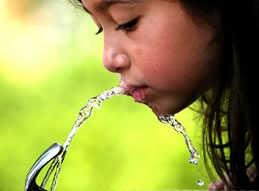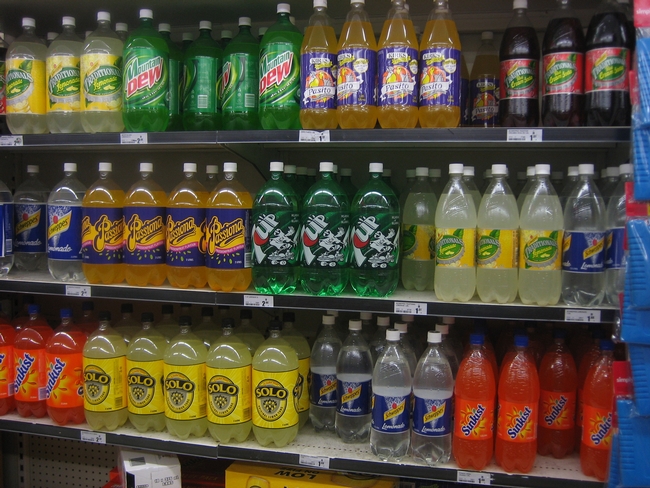Posts Tagged: soda
Berkeley soda tax panel convenes
A nine-member panel of nutrition experts, including a long-time UC Agriculture and Natural Resources (UC ANR) nutrition specialist, convened for the first time this week to make recommendations to the Berkeley City Council about spending the funds raised by the city's soda tax, reported Emily Dugdale in NOSH.
"We're all in a fish bowl built out of a magnifying glass," a Berkeley City Councilmember told the panellists, referring to the national attention and strong community interest in the initiative.
Berkeley taxes sugar-sweetened beverages one cent per ounce. The tax generated $116,000 in its first month of operation.
The UC ANR panelist is Pat Crawford, the senior director of research for the Nutrition Policy Insititute, an organization of experts from throughout the University of California system brought together to share, synthesize, develop and collaborate on nutrition policy research.
In a recent Q&A with the UC Food Observer, Crawford commented on efforts to reduce consumption of sugar-sweetened beverages.
"We have strong evidence of sugar's contribution to diabetes, heart disease, obesity and dental caries," she said. "Hopefully educational materials for the public, including MyPlate, can begin to include water as the beverage that is first for thirst."
Children tend to get too much caffeine
Many parents are unaware their children are consuming too much caffeine, University of Nebraska Medical Center researchers found, and it is not good for their health, according to a post on the "contributed news" website All Voices.
The medical center surveyed the parents of more than 200 children 5 to 12 years old during routine clinical visits at an urban pediatric clinic. The researchers found that 75 percent of the children consumed caffeine on a daily basis, and the more caffeine the children consumed, the less they slept.
Children as young as 5 years old were consuming the equivalent of a can of soda a day. Children between the ages of 8 and 12 years consumed an average of 109 mg of caffeine a day, the equivalent of almost three 12-ounce cans of soda.
The All Voices post referred readers to a UC Davis nutrition and health info sheet titled "Some Facts About Energy Drinks," written by project scientist Karrie Heneman and Cooperative Extension nutrition specialist Sheri Zidenburg-Cherr.
The fact sheet said the caffeine content of a single serving of energy drink (8 to 12 oz.) can range from 72 to 150 mg, however, many bottles contain 2 to 3 servings, raising the caffeine content to as high as 294 mg per bottle. In comparison, the caffeine content in an 8-ounce serving of brewed coffee, tea and cola ranges between 134-240 mg, 48-175 mg and 22-46 mg respectively.
Other stimulants such as guarana and ginseng are often added to energy beverages and can enhance the effects of caffeine. Guarana, in particular, contains caffeine (1 g of guarana is nearly equal to 40 mg caffeine) and may substantially increase the total caffeine in an energy drink.

The more caffeine children consume, the less they sleep.
Californians have an unhealthy thirst for soda
A report released today said that Californians' thirst for soda and other sugar-sweetened beverages is one of the reasons too many of the state's residents are fat.The study, by UCLA Center for Health Policy Research and the California Center for Public Health Advocacy, says 24 percent of California adults drink at least one sugary drink every day, according to news stories published by media outlets throughout the state.
Sacramento Bee reporter Anna Tong sought comment about the trend from Judith Stern of the UC Davis Department of Nutrition.
"When you eat food, it makes you full," she was quoted. "When you drink a soda, it doesn't make you feel full, so it's wasted calories."
According to the Fresno Bee, Central Valley residents drink more soda than people living in other parts of the state. In Fresno, Kings, Madera and Tulare counties 35 percent of adults drink soda every day. Rural Kings County adults led the state in daily soda consumption at 39 percent.
Imperial County had the highest rate of daily soda-drinking among children (60.7 percent) and Tulare County ranked first for teens (71 percent). The lowest rates of soda consumption for children, teens and adults were in Marin and Mendocino counties.
The study also found that soda drinking is linked to obesity. According to the Los Angeles Times story, 62 percent of adults who drink soda daily are overweight or obese, compared with 52 percent who don’t drink soda at all.
The stories reported that the new study may renew calls for imposing a soda tax. According to the Sacramento Bee article, a one cent per ounce soda tax would generate $1.8 billion per year in California. Currently, six states have soda taxes: Missouri, Rhode Island, Tennessee, Virginia and West Virginia.
When soda is cut from the diet, UC Berkeley nutrition professor Patricia Crawford suggests parents give their children water to drink, not sports drinks or fruit juice.
“Nearly all fruit juices provide sugar that children don’t need,” Crawford said. “Sports drinks have fewer calories than sodas, but the calories add up. A student who drinks an extra 20-ounce sports drink every day for a year consumes enough calories to gain 13 pounds over the course of the year.”
For more from UC on healthful beverage choices, click here.

Drinking water


